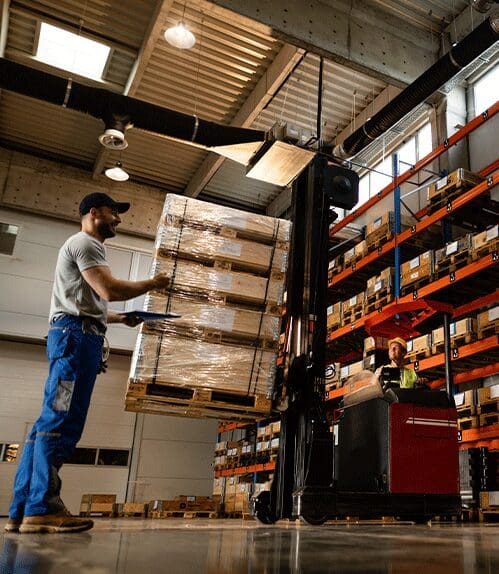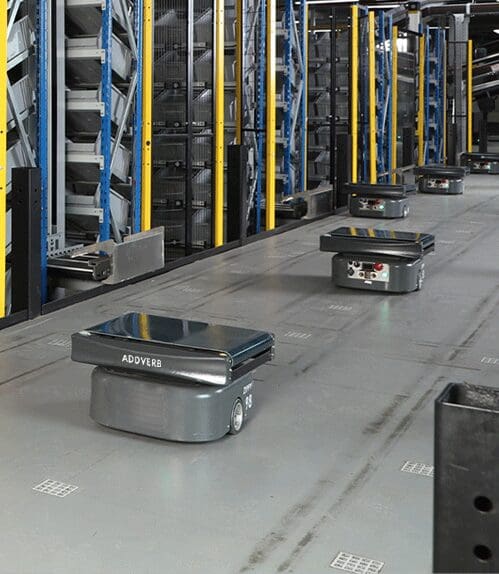Table of Contents
In the ever-evolving landscape of logistics and supply chain management, the question of whether to automate warehouses has become increasingly crucial. As we stand on the threshold of 2025, businesses are evaluating the benefits and challenges of warehouse automation.
Understanding the Need for Warehouse Automation
Warehouses serve as the backbone of any supply chain, and their efficiency directly impacts the overall performance of a business. As demand for faster order fulfilment and greater accuracy rises, companies are turning to automation to meet these expectations. Several factors contribute to the growing interest in warehouse automation:
Rising Labour Costs
As labour costs continue to increase, businesses are seeking ways to reduce dependency on manual labour. Automation provides a solution by streamlining processes and minimising the need for human intervention in repetitive tasks.
E-commerce Boom
The surge in e-commerce has led to a spike in order volumes and the need for uicker order processing. Automation can significantly enhance order fulfilment speed, reducing delivery times and improving customer satisfaction.
Accuracy and Quality
Human errors in manual processes can lead to inaccuracies in inventory management and order fulfilment. Automation ensures precision, minimising errors and enhancing overall product quality.
24/7 Operations
Automation enables warehouses to operate around the clock without the limitations of human labour. This not only increases efficiency but also allows businesses to meet the demands of global markets with different time zones.
Optimal Storage space utilisation
Automated Storage and Retrieval Systems ensure that warehouses achieve maximum storage density and ensure the real estate is being utilised well.
Leverage AI for Enhanced Decision-Making
AI-driven automation in 2025 enables real-time data analysis, predictive maintenance, and smarter decision-making, optimizing operations and reducing downtime across various industries.
When to Automate Warehouses
Determining the right time to automate a warehouse requires a careful assessment of various factors. While each business is unique, here are key indicators that suggest it might be the opportune moment to invest in automation:
1. Volume and Velocity of Orders
If your warehouse struggles to keep up with increasing order volumes and the speed at which orders need to be fulfilled, it may be time to consider automation. Automated warehouses can handle high order velocities more efficiently than manual processes.
2. Return on Investment (ROI) Analysis
Conduct a thorough ROI analysis to evaluate the cost-effectiveness of automation. Consider factors such as labour savings, increased throughput, reduced errors, and the long-term benefits of automation technology.
3. Technology Advancements
Keep an eye on technological advancements in warehouse automation. If there have been significant developments that align with your business needs, it might be the right time to explore automation options.
4. Competitive Landscape
Assess the automation adoption trends within your industry. If competitors are embracing automation or automated storage and retrieval system to gain a competitive edge, it might be wise to follow suit to maintain or enhance your market position.
5. Seasonal Fluctuations
If your business experiences seasonal peaks and troughs, automation can help you manage fluctuations in demand more efficiently. when we Automate warehouses, It can help scale operations based on demand, ensuring optimal resource utilisation.
DHL has recognized the critical need for warehouse automation, and their partnership with Addverb is transforming operations through enhanced speed, accuracy, and scalability.
The Process of Warehouse Automation
Implementing warehouse automation involves a series of strategic steps to ensure a smooth transition. Here’s a comprehensive guide to the process:
1. Assessment and Planning
Begin by conducting a thorough assessment of your current warehouse operations. Identify pain points, bottlenecks, and areas where automation can make the most significant impact. Collaborate with key stakeholders to align automation goals with overall business objectives.
2. Technology Selection
Choose automation technologies that best suit your warehouse’s needs. This may include automated guided vehicles (AGVs), robotic systems, warehouse management systems (WMS), and other cutting-edge technologies. Consider scalability to accommodate future growth.
3. Employee Training and Involvement
Involve your workforce in the automation process from the beginning. Provide training programs to ensure that employees understand the new technology and can seamlessly transition to their new roles within the automated warehouse system.
4. Pilot Implementation
Before fully implementing automation across the entire warehouse, conduct a pilot program in a controlled environment. This allows you to identify and address any issues, refine processes, and ensure that the selected technology integrates smoothly with existing systems.
5. Integration with Existing Systems
Ensure seamless integration between the new automation technology and existing warehouse management systems. This may involve customising software, updating interfaces, and establishing communication protocols to facilitate data exchange.
6. Continuous Monitoring and Optimization
Implement a robust monitoring system to track the performance of automated warehouse system. Regularly analyse data to identify areas for optimisation and improvement. Continuous monitoring ensures that your warehouse remains agile and responsive to changing business dynamics.
7. Scalability and Future-Proofing
Choose automation solutions that are scalable and adaptable to future changes in your business. Future-proofing your warehouse automation ensures that your investment remains relevant and effective as your business grows and evolves.
If you are interested to Automate your warehouse, Contact our experts today!
It is high time to Automate Warehouses
By understanding when and why to automate, businesses can position themselves for greater efficiency, accuracy, and competitiveness in the dynamic landscape of supply chain management. Addverb’s team keeps innovation at priority and as we navigate the challenges and opportunities of the coming years, warehouse automation will likely play a pivotal role in shaping the future of logistics.
The decision to automate warehouses in 2025 should be based on a careful evaluation of various factors, including order volumes, labour costs, technological advancements, and the competitive landscape. The process of warehouse automation involves strategic planning, employee involvement, pilot implementation, and continuous optimisation.






